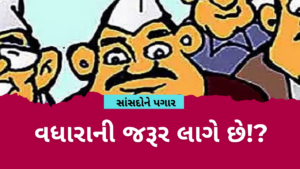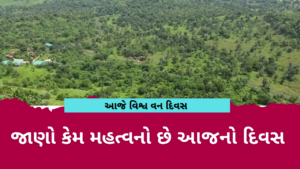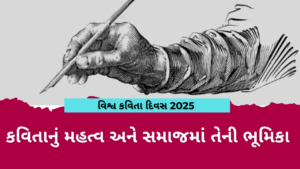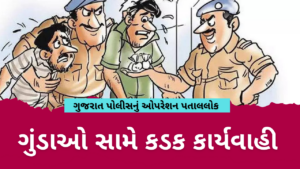Ajaybhai poured more batata vada, into the hot oil that had been simmering in a large iron patila since the morning. He had already made the vadas, which were made of mashed potato combined with spices, green chilli, and, occasionally, finely chopped raw onion, into nearly flawless spheres, and just before frying them, he had swiftly coated them in a thick besan batter. Anyone would become impatient as the vada hissed softly post landing in the oil and the fragrance of the besan batter floated in the air. The vada were freshly out after a few tosses and turns.
A Strong Palette
 “Lahsun chutney?” people usually question as the pav is cut open. A generous amount of green chili-coriander chutney is spread on it.
“Lahsun chutney?” people usually question as the pav is cut open. A generous amount of green chili-coriander chutney is spread on it.
The chewy blandness of the pav served as a foil to the powerful crunchiness of the vada, creates the ideal contrast in flavours and textures. The first mouthful would hit your palette, of eating this spicy creation. Both chutneys’ would travel across your tongue, you could feel it. The vada pav undoubtedly is a delicious carb explosion that gives immediate energy.
Easy on Pocket
Today, nearly every citizen of India (and not just Mumbai), from factory workers, college students to Bollywood stars, openly profess their love for vada pav, making it associated with their own cities. Vada pav makes for the easiest, most affordable on-the-go snack for a someone who is constantly on the move. The price at which it is sold just fits into the budget of a person belonging to any economic strata.
Evolution of the Humble Vada Pav
 Back in 1966, a Mumbai native Ashok Vaidya had set up the first vada pav stand in front of the Dadar train station, where hundreds and thousands of workers travelled daily on their way to the nearby textile mills in Parel and Worli and were frequently in need of a quick and inexpensive snack. When Mumbaikars were still referred to as Bombayites, vada pav was an instant hit.
Back in 1966, a Mumbai native Ashok Vaidya had set up the first vada pav stand in front of the Dadar train station, where hundreds and thousands of workers travelled daily on their way to the nearby textile mills in Parel and Worli and were frequently in need of a quick and inexpensive snack. When Mumbaikars were still referred to as Bombayites, vada pav was an instant hit.
Shiv Sena’s Bal Thackeray, encouraged many former mill workers to create their own vada pav kiosks after strikes in the 1970s and 1980s which eventually resulted in the closure of the textile mills.
Promoting Local
 There were many stalls set up by people from the South Indian temple town of Udupi in Karnataka. The vada pav was later co-opted by the Shiv Sena in order to offer a Maharashtrian alternative to the Udupi joints that were extremely popular at the time. The Shiv Sena’s campaign coincided with the surge in popularity of numerous south Indian cuisines, including the idli and dosa. The plan was to get Mumbaikars to embrace their local cuisine rather than “outside” munchies, which was a very effective tactic during those difficult economic times.
There were many stalls set up by people from the South Indian temple town of Udupi in Karnataka. The vada pav was later co-opted by the Shiv Sena in order to offer a Maharashtrian alternative to the Udupi joints that were extremely popular at the time. The Shiv Sena’s campaign coincided with the surge in popularity of numerous south Indian cuisines, including the idli and dosa. The plan was to get Mumbaikars to embrace their local cuisine rather than “outside” munchies, which was a very effective tactic during those difficult economic times.
Combining the ‘Foreign’
Ironically, the potato and the bun, which are vada pav’s two core ingredients, are both European imports that the Portuguese introduced to India in the 17th century. The besan, which is used to coat the potato mixture before it is deep-fried, is the sole important ingredient in the meal that was originally from India.
Post McDonaldisation
 Even after the introduction of multinational chain like McDonald’s, which offers vegetarian burgers comparable to vada pav to satisfy many Indians’ allergy to meat, the vada pav sector in Mumbai (and now the whole of India) continues to thrive in peace. However, McDonald’s McAloo Tikki burger couldn’t be more dissimilar from the renowned vada pav, even though the patties are made of fried potatoes. It doesn’t match the amount of spice in the locally produced vada pav, and it also doesn’t leave much opportunity for creativity.
Even after the introduction of multinational chain like McDonald’s, which offers vegetarian burgers comparable to vada pav to satisfy many Indians’ allergy to meat, the vada pav sector in Mumbai (and now the whole of India) continues to thrive in peace. However, McDonald’s McAloo Tikki burger couldn’t be more dissimilar from the renowned vada pav, even though the patties are made of fried potatoes. It doesn’t match the amount of spice in the locally produced vada pav, and it also doesn’t leave much opportunity for creativity.
Tale of the Secret Recipe
Every vendor claims to have a secret recipe or special ingredient that makes his vada pav special, such as a pinch of ground masala or a topping of choora. The flavour of vada pav is entirely up to the cook’s whims.
 Many brands began to franchise the vada pav as a part of their company in the early 2000s after spotting an opportunity for profit. They initiated to call it as the ‘Indian burger’ which immediately gave it an aspirational value, as well as a cultural context for the ‘outsiders’. A number of new variations on the classic snack are also introduced today, including the Schezwan vada pav (influenced by Chinese food) and the Nacho vada pav (topped with tortilla chips). The newer variations have found a market, making up more than 40% of sales.
Many brands began to franchise the vada pav as a part of their company in the early 2000s after spotting an opportunity for profit. They initiated to call it as the ‘Indian burger’ which immediately gave it an aspirational value, as well as a cultural context for the ‘outsiders’. A number of new variations on the classic snack are also introduced today, including the Schezwan vada pav (influenced by Chinese food) and the Nacho vada pav (topped with tortilla chips). The newer variations have found a market, making up more than 40% of sales.
Though, even with the infinite variations, many of us continue to vouch for the original vada pav made in the street-side stalls.





